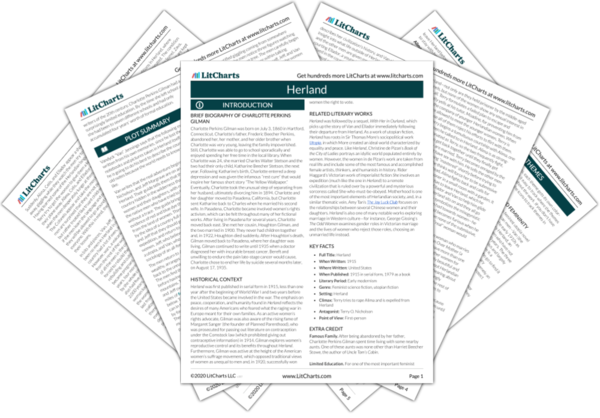Next
Summary
Herland Study Guide |
Next
Summary
|
Welcome to the LitCharts study guide on Charlotte Perkins Gilman's Herland. Created by the original team behind SparkNotes, LitCharts are the world's best literature guides.

Famous Family. After being abandoned by her father, Charlotte Perkins Gilman spent time living with some nearby aunts. One of these aunts was none other than Harriet Beecher Stowe, the author of Uncle Tom’s Cabin.
Limited Education. For one of the most important feminist writers of the 20th century, Charlotte Perkins Gilman had a surprisingly limited education. By the time she left school at 15, she had been to seven different schools and had only accumulated four years’ worth of formal education.